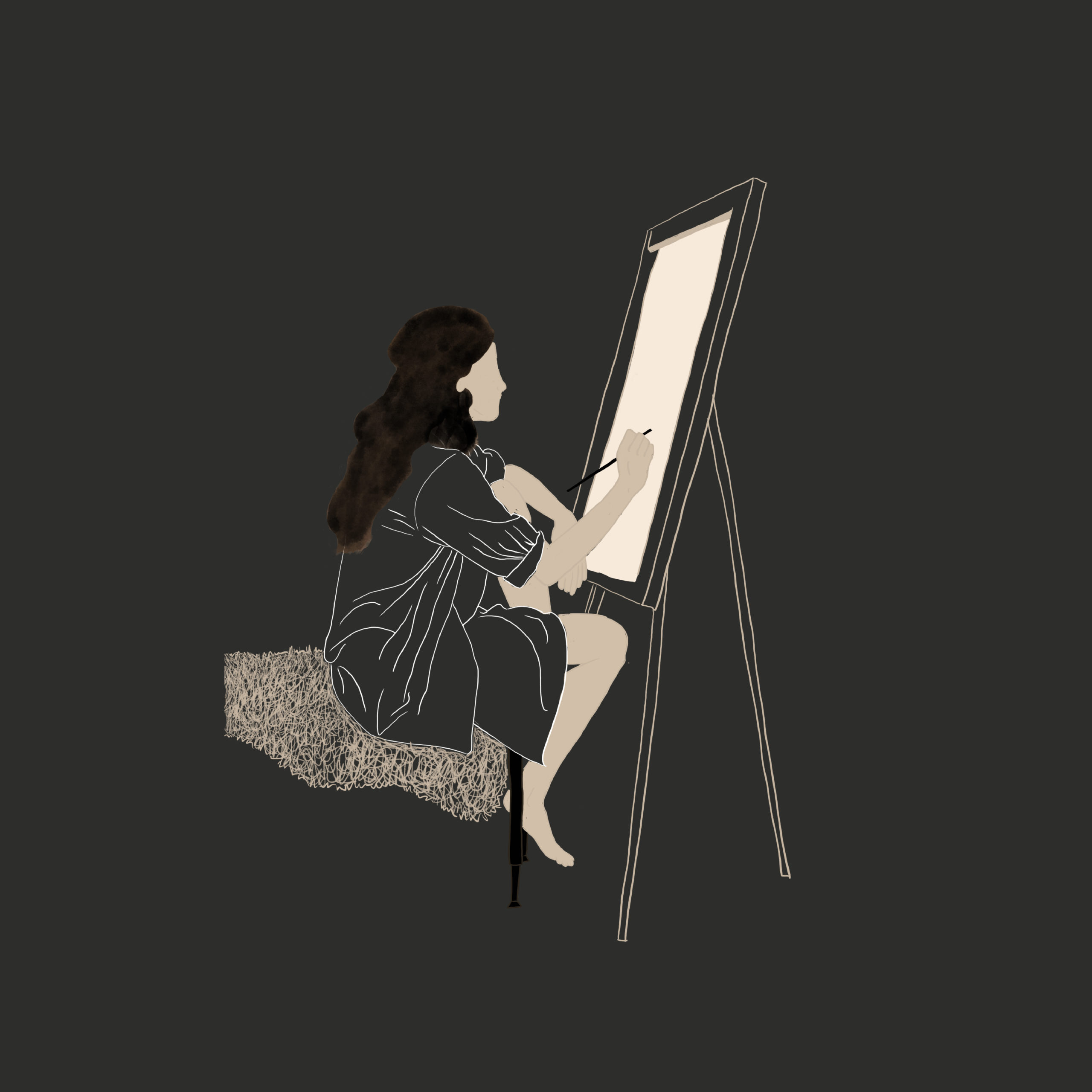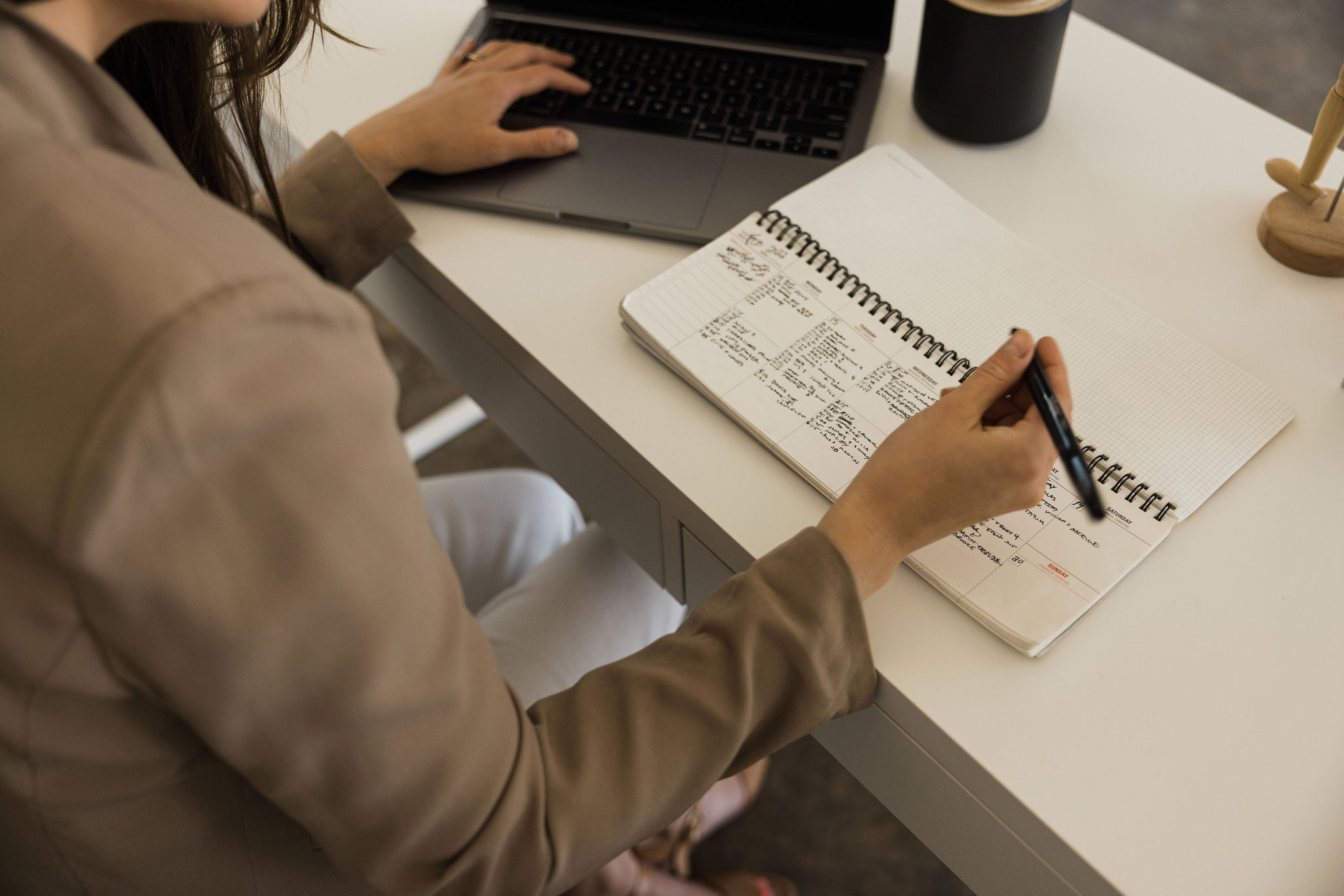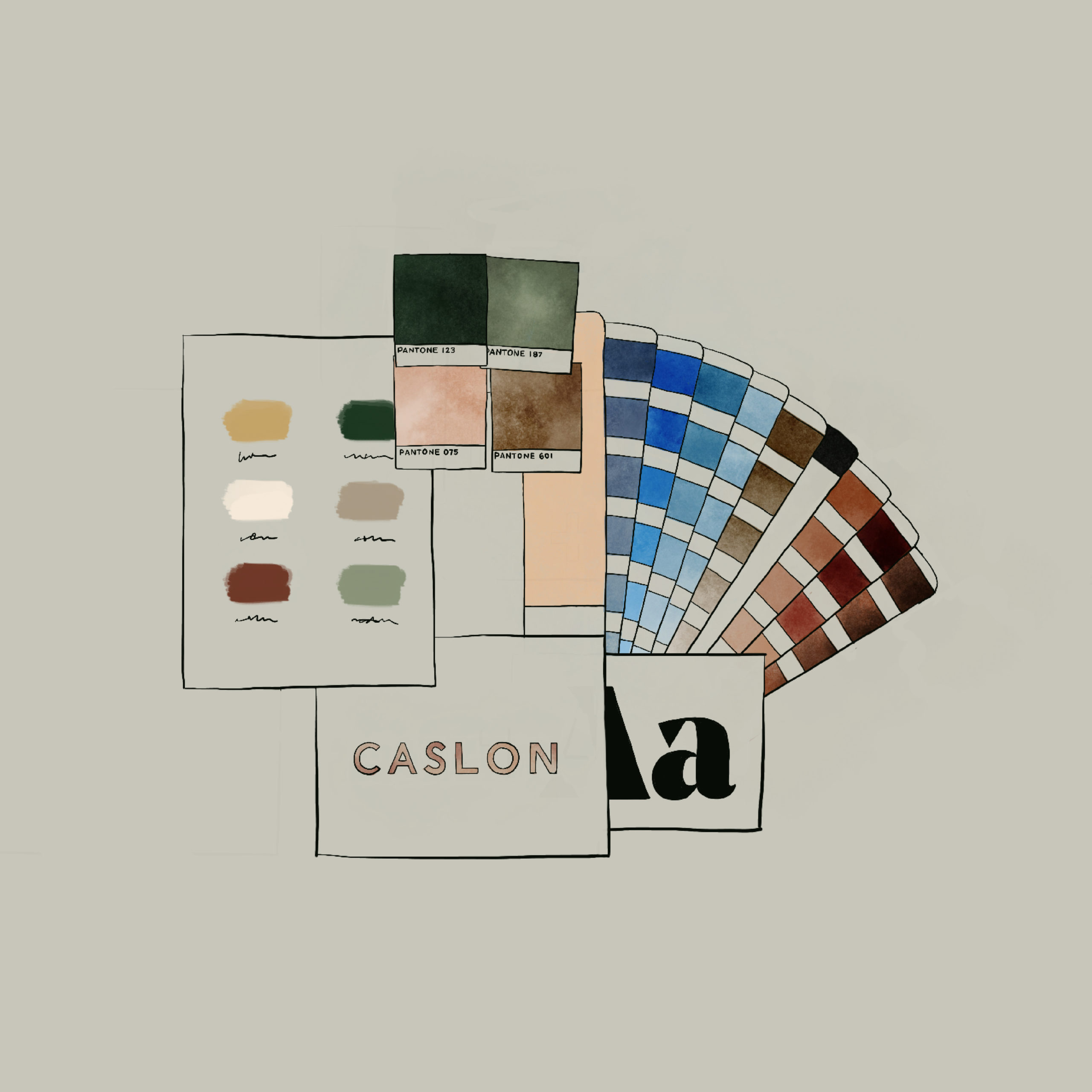Welcome to part four of the Enneagram series! If you are a Type Four, this post is meant to offer some clarity into your personality and ideas for improving your work life. If you are not a Type Four, chances are you know one. My hope is that this gives you greater compassion and appreciation for the Artists in your life.
In this series, we will be heavily referencing The Modern Enneagram, which was one of the options for #dropcapbookclub on Instagram. Because the votes were tied, we will be going through Gary Vaynerchuk’s Crushing It in book club, but I will be doing this blog series on the Enneagram for those of you who want to learn more about this wonderful personality tool. You can grab a copy of The Modern Enneagram on Amazon, which will give you additional thoughts and insights into your type and how it plays with others.
We’re going to focus on each personality in the context of a work environment. Our lives are incredibly complex, and The Modern Enneagram explores family dynamics, romantic relationships, and personal development, but we won’t be exploring those issues in this series.
In each type’s post, you’ll learn:
-
YOUR CORE MOTIVATION
-
HOW TO HANDLE STRESS
-
CREATING THE RIGHT WORK ENVIRONMENT
The Modern Enneagram starts with a story of “Julia” (who is a Type Seven) and I found it extremely helpful in understanding how the Enneagram model might be applied to a real person. So let’s start with our own story of a fictional Type Four named Hannah. Keep in mind that the point of this story is to notice the patterns of motivation, not the specific circumstances or behavior.
“Hannah is a 29-year-old portrait photographer in a small beach town on the west coast. She enjoys waking up early in the morning to photograph the surfers and traveling to experience new cultures around the world.”
We’ll use Hannah as an example of a Type Four as we dive into the deeper personality and core motivations of this type.

artwork by Elicia Edijanto
The Sleeping At Last “Four” song has not yet released (although they have given us a small glimpse of the beautiful artwork as seen above!) I will link to the song and podcast here as soon as it becomes available.
Core Motivation
Motivation – desire to fully know themselves and be significant
Basic Fear – fear of being boring, normal, or average
Hannah has a natural ability to capture human emotion on film. As a little girl, she was fascinated with the world of princesses. She loved getting lost in her thoughts about the magnificent castles and worlds where her imagination could roam free and her hunger for adventure was satisfied. On her thirteenth birthday, she was gifted a small camera and became obsessed with documenting her friends’ lives during high school and college. When other girls outgrew their love of fantasy, Hannah searched for ways to express her imagination as an adult, and allow others to see the world through her eyes. She loves photographing women in unique settings and getting to experience their joy at seeing themselves as beautiful humans. As a photographer, she is able to create a world in her mind and invite others to share in her play.
Hannah’s Unfolding Story
Hannah’s desire to know herself makes her a remarkable artist. She’s not afraid to dive into the deep recesses of her mind to find new inspiration for her art. Her imagination is on hyperdrive and she constantly looks for ways to make the world around her match the one in her dreams. Her friends value her creative input and are constantly roping her into collaborations and creative projects to capitalize on her good taste and original ideas.
When Hannah is inspired, she produces remarkable work and stunning imagery. Her inspired energy is tireless. She can stay up late into the night working through an idea and completely lose track of time, enjoying every moment of exploring her curiosity.
However, when Hannah feels overwhelmed or unoriginal, she can slip into an average or unhealthy state. When she’s not feeling inspired or happy, she can’t complete her tasks or produce creative work. She often spends just as much time getting in the mood to take photos as she does executing her ideas. She can often sink into seasons of depression, questioning herself and feeling exhausted from the pressure to make meaningful art. She gets so wrapped up in trying to understand her emotions that she becomes paralyzed by them.
If left unchecked, Hannah can become depressed and emotionally unstable. Where she once felt led by inspiration, she now feels lost and directionless. Afraid of settling for a boring life or losing her creative ability, Hannah can wallow in self-pity and feeling jealous of others’ personal accomplishments. She’ll eventually settle into an apathetic state, losing her connection to her work and becoming envious of others’ perceived success. This negative spiral leaves her feeling drained and hopeless.
Stress
In states of stress, Fours take on the characteristics of an unhealthy and clinging Type Two. When they feel that their longed for ideal is missing and they feel trapped by their reality, Fours start to do what others want them to do and look for someone to save them.
When stress progresses, they become depressed and emotionally paralyzed. Feeling angry and ashamed of themselves, they become self-destructive and may experience emotional breakdown while becoming too dependent on others to rescue them.
how to counteract stress for a type four
1. You are not your feelings, so don’t pay too much attention to them.
When Hannah starts to feel overwhelmed and her creative projects begin to drain her energy, she reminds herself that she cannot always trust her mood. Meditation has helped her to acknowledge her passing emotions without feeling identified by them. When she knows she is beginning to spiral, she’ll spend a little bit of time writing out her thoughts and feelings, and then get back to the task at hand.
2. Cultivate the discipline to do your work even when you’re not “feeling it.”
Instead of waiting for inspiration, Hannah goes out in search of it. She realizes that she is able to rely on her creativity when she has structure and routine in her daily life. She now makes it her morning ritual to do something creative for the sake of creativity. She commits to working on her projects even on days that she doesn’t feel inspired, at least for a set amount of time. She can now identify creative resistance and commit to doing the work anyways.
3. Put yourself in a position for good things to happen. You are ready.
Hannah works consistently to improve her self-confidence. Even though she rarely feels capable of pursuing the grand ideals she has in her head, she also realizes that she is usually getting in her own way. She surrounds herself with encouraging friends and takes small steps continuously towards her bigger goals.
4. Develop a consistent routine of healthy activities that will give you strength.
Hannah has seen the benefits on her emotional stability when she fosters healthy rituals for her mind and body. She is dedicated to getting a full eight hours of sleep, taking mental breaks from editing her photos, and even got a dog to help her develop healthy habits outside the studio. She also started taking a cooking class with her girlfriends and planting a small herb garden outside her window. As she develops new healthy routines, she realizes that she has creative opportunities to work with her hands outside of photography, and that often inspiration strikes during unexpected moments of routine when her mind is at rest.
5. Get out of your head and into your life.
Instead of letting her imagination get out of control, she shares her thoughts and inner dialogues with her friends who keep her mindful of reality. While her dream world has its place for inspiration and play, she now realizes that her imagination is not a replacement for real life.
Work Environment
The most important thing for a Type Four to experience at work is significance. As a Type Four entrepreneur, it is crucial that you have a personal connection to your work and feel called to the business you have founded. Here are three other ideas for incorporating your Type Four strengths in your business:
-
Bring your customer or client into the creative process. You have strong emotional intelligence that will help you tune in to your customer and understand their true challenges. You will experience joy in collaborating with others, especially when you are recognized as the expert.
-
Create a buffer in your timelines for when you aren’t in the right headspace to work. When you’re stressed, you have a tendency to procrastinate and overreact, so make sure you have space to briefly retreat on the chance that you become overwhelmed. However, you also will benefit from deadlines and structure, so make sure that you do not create open-ended projects.
-
Lead with your creativity. Whether you are a true artist or not, you have a vivid imagination that, when nurtured, will inspire innovative solutions. Communicate to your clients and customers that originality is an important components of your brand, and share what inspires you.
When we first met Hannah, she was a creative portrait photographer who loved expressing her inner dreams and emotions through captivating imagery. Her adventurous spirit and imagination were a major asset to her work and allowed her to produce highly conceptual and original work. As a working artist, Hannah was rewarded for her wild ideas and creative tangents. However, the pressure to create on demand was leaving her feeling emotionally drained and uninspired.
By gaining a deeper understanding of herself and how she handles stress, Hannah will be able to recognize her moods as unreliable touchpoints in her emotional makeup. When she is practicing healthy rituals with diligence and consistency, her mind and body balance her emotional spectrum, allowing her to get back to a place of inspiration and joy in doing her work. By reigning in her imagination and the pressure that she puts on her work, Hannah is able to enjoy the process and grow as an artist. Her creative community helps her to navigate seasons of apathy and turn them into opportunities for growth and adventure.
Although Hannah will always struggle with envy, she will gain a better grasp of her moods and experience the peace that comes from cultivating gratitude in her daily life. When she is able to foster a healthy relationship to her emotions, she will become a more prolific and reliable artist, seeing inspiration and possibility in everything. She recognizes that change takes time. Instead of feeling defeated when a bad mood strikes, she now takes a moment to recognize the negative emotion, remind herself about the good in her life, express gratitude, and move forward.
It turns out that her greatest contribution is her ability to feel the entire spectrum of emotion and communicate her imaginative mind in ways that others can experience too. By seeing her emotions as a journey instead of a battle, she has now found a unique personal narrative of growth and inspiration that she can share with the world.
>
“How do you like this new series? Do you identify as an Enneagram Type Four? Comment below with your own story!”
If you enjoy learning more about the Enneagram and are curious about how to lead with your personality in your business, you may enjoy participating in our Enneagram for Entrepreneurs course. Click the link below to find out more!




I’m really enjoying these posts. You do a great job of bringing the types to life. I wonder if you might update the post, since the Sleeping at Last "Four" is now available.
Hey Jacki,
Thank you so much for the kind words! I am going through right now and updating the Sleeping At Last songs! They really are so beautiful and add a lot of insight into each number.
I’m a strong four, and I love this post. It’s very well written and lays out all of the personality aspects so clearly and beautifully. I usually see 4’s described as "the Individualist" or "Creative Individualist" but Artist works really well too. Keep up the beautiful work:)
I am a four and I loved this. Thank you.
This is amazing. I was discouraged when I took the test and found out I was a four, because every analysis I had seen of them described them as whiny and obnoxiously individualistic. I resonated with this, and was both inspired and comforted. Thank you!
This resonates positively with me. I’m a Four and was frustrated by the descriptions of my type online. Even though it sounds very Four to say, I think we are a misrepresented type, because we have such an ability to show gratitude and positivity in our lives by virtue of our joy for life. I would even call us optimists. Thanks for this!